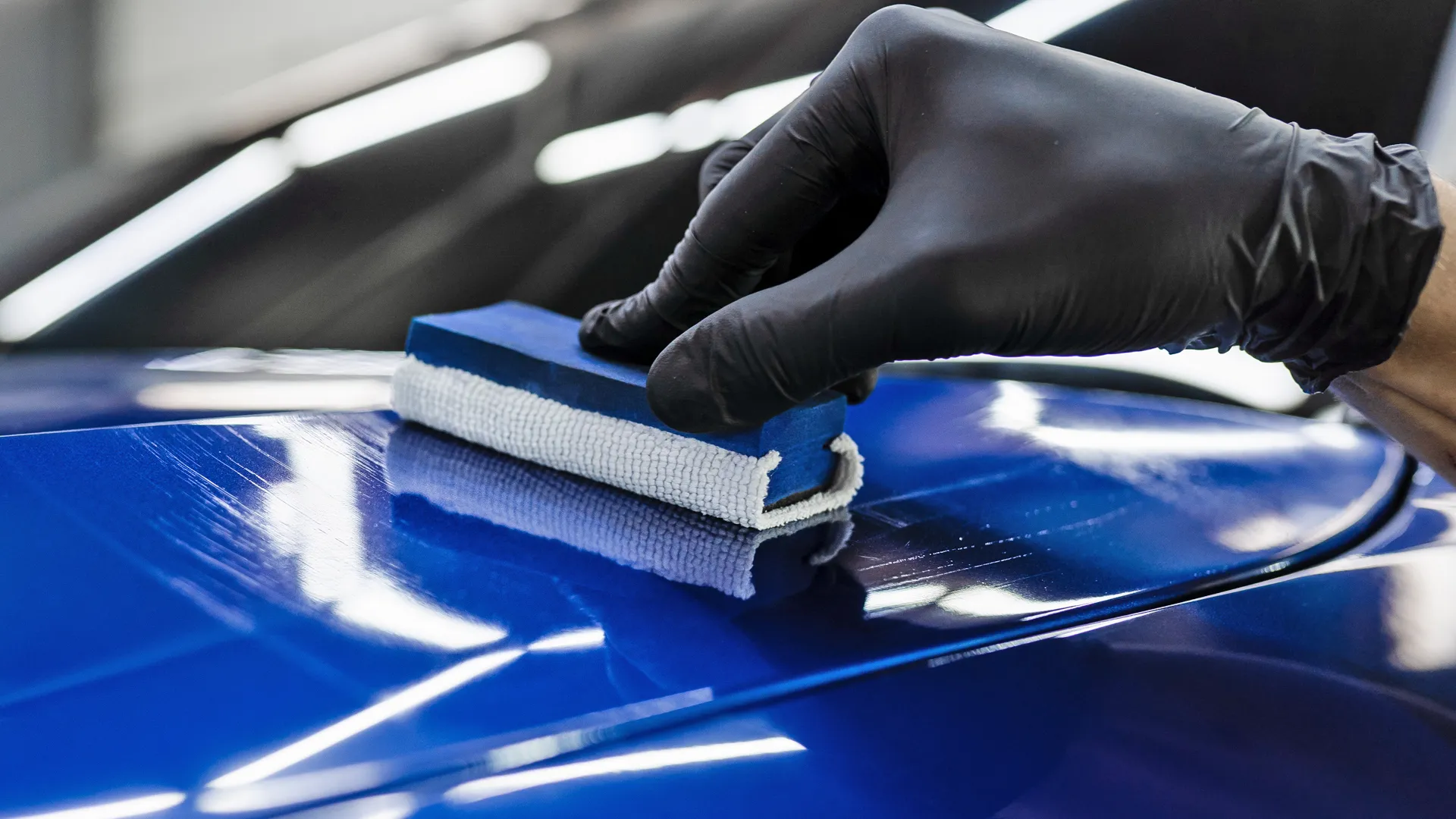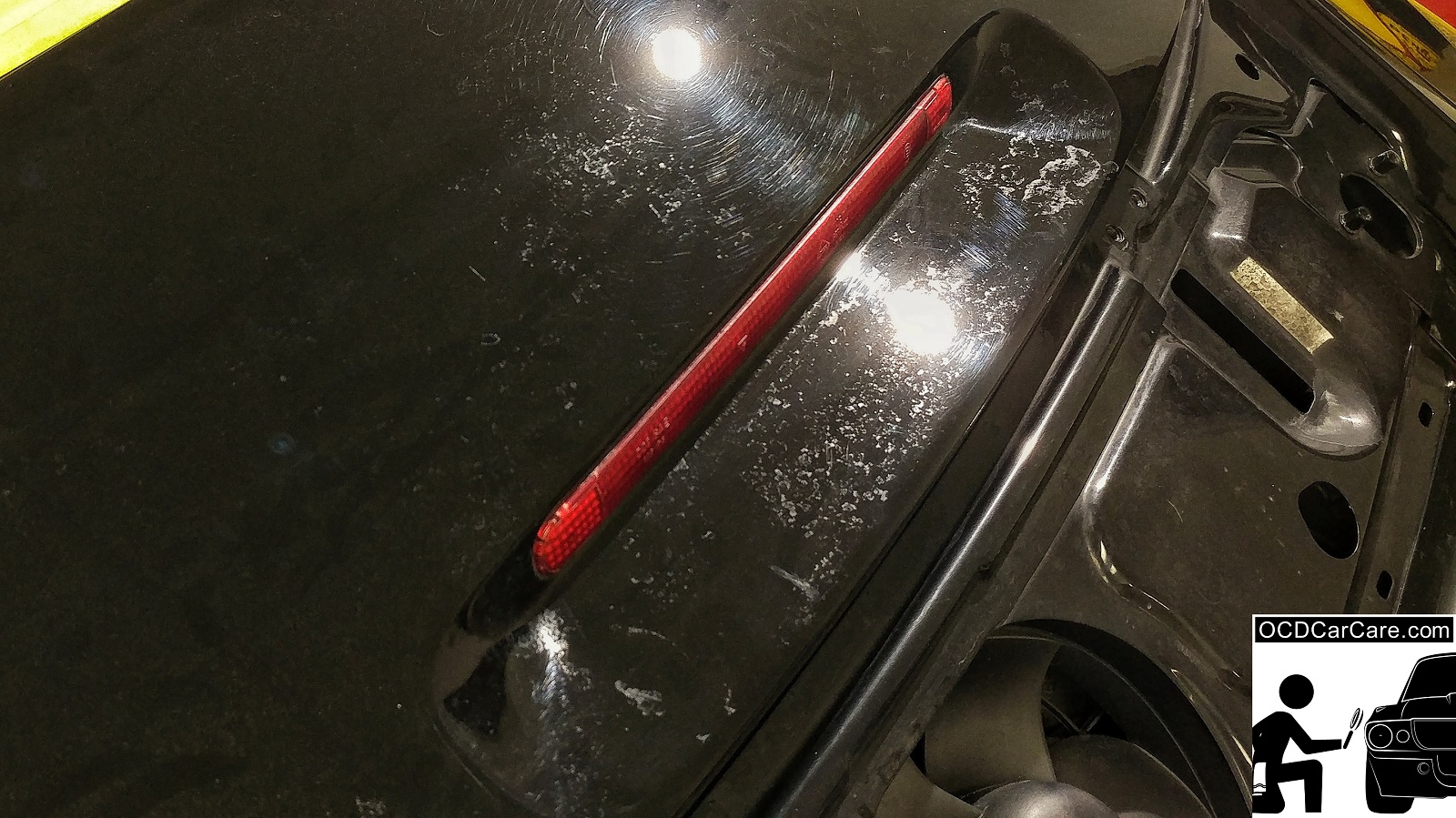Ceramic Coating for Cars: The Ultimate Solution for a Glossy Finish
Ceramic Coating for Cars: The Ultimate Solution for a Glossy Finish
Blog Article
Ceramic Covering vs. Standard Wax: Which Provides Better Long-Term Protection?
The debate in between ceramic finishings and conventional wax for vehicle protection has amassed considerable attention amongst automotive fanatics and experts alike. Ceramic coatings flaunt exceptional long life and resistance to environmental variables, yet the complexity of their application elevates concerns concerning availability and practicality.
Review of Ceramic Finish
Ceramic finish has gained considerable appeal among auto enthusiasts and detailers alike as a result of its sophisticated safety qualities. This ingenious modern technology is developed to develop a resilient, hydrophobic guard over a vehicle's paint surface area, significantly improving its resistance to ecological contaminants such as dust, UV rays, and chemical stains. Unlike standard wax, which gives a momentary layer of protection, ceramic layers bond at a molecular degree with the paint, offering lasting longevity-- typically expanding past 2 years with proper maintenance.
The application process includes careful prep work of the lorry's surface, including cleaning and polishing to make sure optimum attachment. Once applied, the finish treatments to create a durable layer that not just includes depth and gloss to the paint but also simplifies maintenance. With its hydrophobic properties, ceramic covering enables water and dirt to slide off even more conveniently, reducing the frequency of washes and lessening the danger of swirl marks.
Furthermore, ceramic finishings are offered in different formulas, enabling individuals to select products customized to their certain requirements and preferences. In general, ceramic covering represents a significant advancement in paint defense modern technology, providing exceptional performance contrasted to traditional choices.
Summary of Traditional Wax
Commonly related to as a staple in auto treatment, wax works as a preferred option for those looking for a straightforward approach to improve and safeguard their vehicle's paint - ceramic coating. Automotive wax typically consists of natural active ingredients, such as carnauba, or artificial compounds, created to develop a safety layer externally of the paint. This layer not just improves the lorry's gloss and radiate but also supplies a barrier versus environmental pollutants
The application of wax is typically straightforward, making it easily accessible for both professionals and do it yourself enthusiasts. It can be used by hand or machine, permitting for versatility in the describing process. When used, wax requires a treating duration, after which it hardens to create a protective shell. Wax is additionally known for its capacity to ward off water, advertising a beading impact that assists in the prevention of water areas and deterioration.
Nevertheless, while wax works for improving the visual allure of a vehicle, it is vital to note that the defense it provides might require more regular reapplication contrasted to alternate items, such as ceramic layers. Generally, standard wax stays a preferred choice for those prioritizing simplicity of use and immediate aesthetic renovation.
Toughness and Long Life Comparison
While both ceramic coverings and standard wax offer safety advantages for automobile paint, their sturdiness and longevity differ dramatically. Standard wax, usually made from natural carnauba or artificial polymers, generally gives a safety layer that lasts approximately three to 6 months. This relatively brief life-span demands regular reapplication to maintain optimal protection.
On the other hand, ceramic coverings are engineered from advanced nanotechnology, forming a covalent bond with the paint surface. This leads to a durable, hydrophobic layer that can endure for two to 5 years, relying on the product and ecological problems. The remarkable toughness of ceramic finishings is credited to their chemical structure, which uses enhanced resistance to scrapes, UV rays, visit and oxidation.

Defense Versus Environmental Variables
Safeguarding an automobile's paint from environmental aspects is vital for maintaining its appearance and worth gradually. click now Vehicles are regularly exposed to a variety of elements, consisting of UV rays, bird droppings, tree sap, acid rain, and road gunk, every one of which can jeopardize the stability of the paintwork.
Ceramic coverings offer a durable defense against these environmental assailants. Unlike conventional wax, which can weaken rapidly under UV exposure, ceramic finishings develop a durable, hydrophobic layer that stands up to the damaging results of sunshine and toxic wastes. This innovative innovation creates a chemical bond with the automobile's surface, supplying remarkable defense that lasts for years, also in harsh problems.
In contrast, ceramic coverings maintain their safety high qualities longer, significantly lowering the threat of paint damage and ensuring that the lorry preserves its aesthetic appeal. As an outcome, ceramic finishes are increasingly identified as the remarkable option for long-term protection against ecological elements.
Application and Upkeep Differences
The methods of application and succeeding maintenance for ceramic finishes and traditional wax vary significantly, affecting the total individual experience and performance of each product. Ceramic finishes call for a more complex application procedure, usually entailing surface preparation that consists of cleaning, decontaminating, and polishing the lorry. Once the surface prepares, the ceramic coating is applied in a regulated setting, often needing expert knowledge to make sure correct curing and bonding to the paint.

While both products enhance automobile appearance, the longer-lasting protection used by ceramic finishes may warrant their preliminary financial investment, despite the even more requiring application procedure. Alternatively, traditional wax remains a popular choice for those looking for a less complex, albeit temporary, remedy.

Conclusion
In discover this info here final thought, ceramic coatings demonstrate substantial advantages over conventional wax in regards to durability and environmental protection. With a lifespan prolonging two to five years and exceptional resistance to UV rays, dirt, and chemical spots, ceramic coatings provide a much more reliable option for long-term automobile upkeep. Although the application procedure might require professional know-how, the resulting expense savings and decreased frequency of reapplication emphasize the worth of ceramic finishes for those seeking optimal lorry security.
The dispute in between ceramic layers and typical wax for automobile protection has actually gathered significant focus among auto lovers and professionals alike. Unlike typical wax, which provides a momentary layer of protection, ceramic coatings bond at a molecular degree with the paint, offering lasting durability-- usually extending beyond 2 years with appropriate upkeep.
While both ceramic coatings and standard wax offer protective advantages for automotive paint, their longevity and longevity differ significantly. For automobile enthusiasts seeking lasting defense, ceramic finishings offer a compelling benefit over conventional wax items.
In final thought, ceramic layers demonstrate substantial advantages over typical wax in terms of sturdiness and ecological security.
Report this page